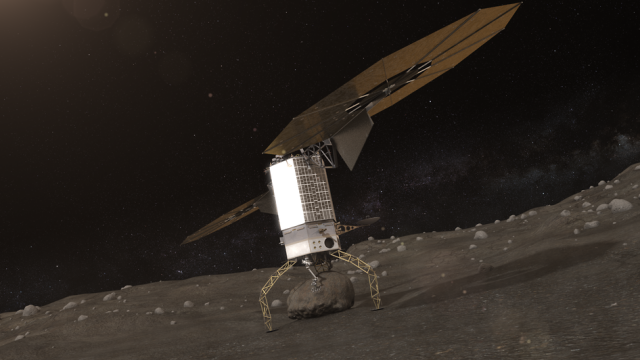
Today, NASA held a press conference in which it described the latest developments in its plan to return an asteroid to an orbit close enough to Earth that it could easily be studied by a manned mission. Gone is the idea of returning an entire asteroid. In its place, a robotic probe will pluck a boulder from the surface of an asteroid and return that, testing our ability to redirect similar rocks if they threaten Earth.
In fact, the entire mission is generally focused on technology development. Once the asteroid is placed in a cis-lunar orbit, it will be visited by a crewed Orion capsule that will allow detailed study and a return of samples to Earth. But the focus of this mission will be testing technology that will allow extended manned missions in space.
The current timeline involves further studies of potential targets for extracting a boulder in the years leading up to 2019. Right now, three asteroids are on the menu: Itokawa (which was visited by the Japanese spacecraft Hayabusa), Bennu (which is planned for a sample return mission called OSIRIS-REx), and 2008 EV5. In each case, the orbit and composition are well-known, making them relatively low risk.
A robotic probe will be launched in 2020 to rendezvous with the asteroid, testing the ability of its gravitational interactions to alter the body's orbit. The probe will also provide further tests of solar-powered ion engines, which can move mass efficiently (if slowly) in space. NASA hopes to eventually use these engines to pre-position equipment and supplies for manned missions.
After the probe identifies and removes a boulder from the asteroid using robotic arms, it will further examine how the altered mass balance influences the asteroid's orbit. Eventually, however, the probe will depart with its boulder, returning it to the cis-lunar orbit and studying it on the way. It's expected that the rock will be in place by late 2025, after which the manned mission will follow using NASA's Orion spacecraft.
The manned mission will be "in support of advancing the nation’s journey to Mars," according to NASA. The manipulations of the asteroid's orbit, in contrast, "will help NASA develop options to move an asteroid off an Earth-impacting course, if and when that becomes necessary." Undoubtedly, science will get done in the process, but it's not clearly the focus of this effort.
Whether any of this ever happens is still in doubt. There is a fair bit of opposition to this effort in Congress, along with plans for widespread cuts in discretionary spending. However, it would be in keeping with Senator and presidential candidate Ted Cruz's efforts to push NASA away from Earth sciences and have it focus on space exploration.
reader comments
80